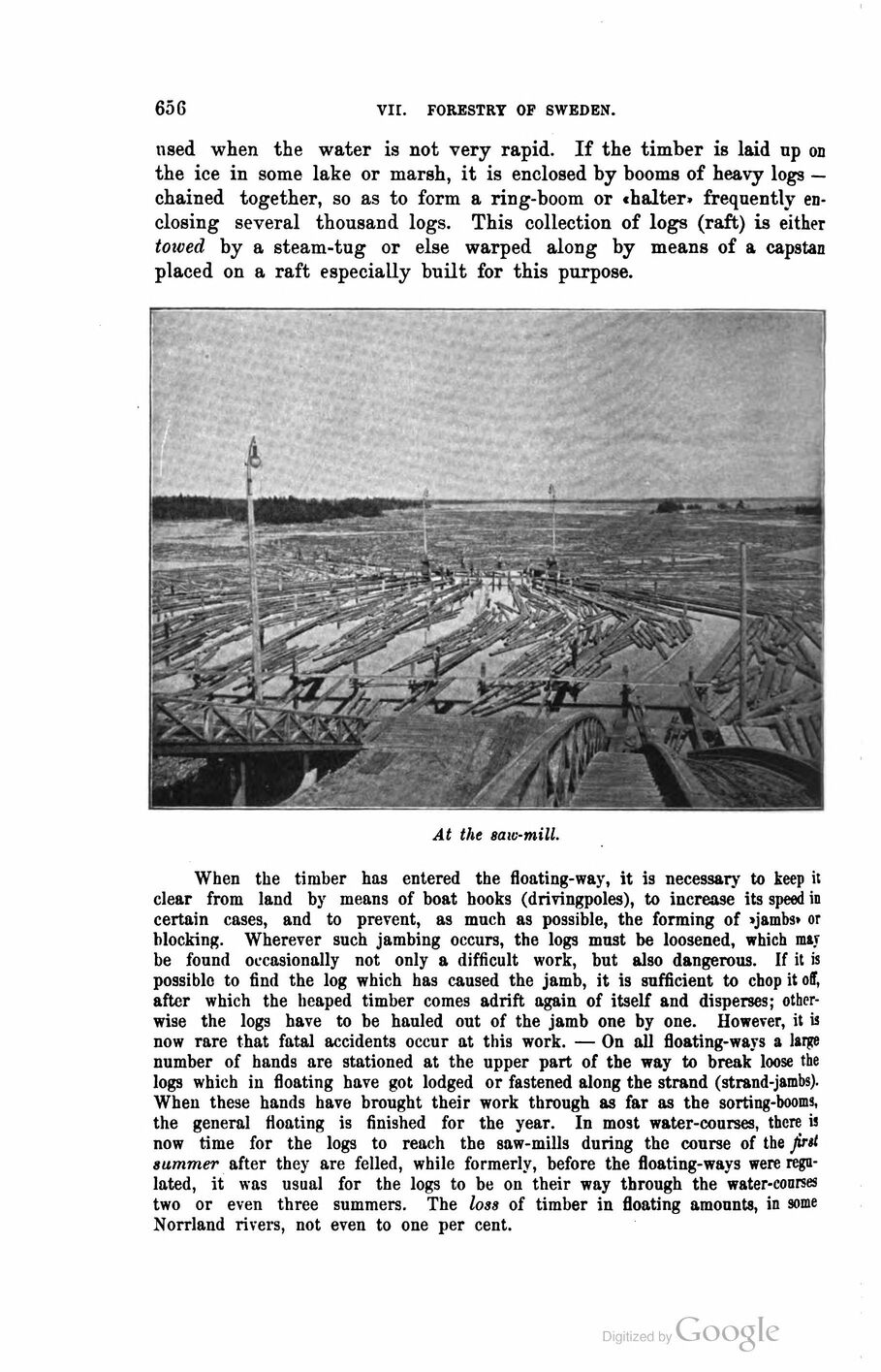
Full resolution (JPEG) - On this page / på denna sida - Second part - VII. Forestry - 2. Forest Industries. By E. Arosenius, Ph. D., Royal Central Bureau of Statistics, Stockholm - Floating, by Th. Örtenblad, Chief Master of Forest, Umeå

<< prev. page << föreg. sida << >> nästa sida >> next page >>
Below is the raw OCR text
from the above scanned image.
Do you see an error? Proofread the page now!
Här nedan syns maskintolkade texten från faksimilbilden ovan.
Ser du något fel? Korrekturläs sidan nu!
This page has never been proofread. / Denna sida har aldrig korrekturlästs.
656
VII. FORESTRY OF SWEDEN’.
used when the water is not very rapid. If the timber is laid up on
the ice in some lake or marsh, it is enclosed by booms of heavy logs —
chained together, so as to form a ring-boom or »halter» frequently
enclosing several thousand logs. This collection of logs (raft) is either
towed by a steam-tug or else warped along by means of a capstan
placed on a raft especially built for this purpose.
At the saic-mill.
When the timber has entered the floating-way, it is necessary to keep it
clear from land by means of boat hooks (drivingpoles), to increase its speed in
certain cases, and to prevent, as much as possible, the forming of »jambs» or
blocking. Wherever such jambing occurs, the logs must be loosened, which ma?
be found occasionally not only a difficult work, but also dangerous. If it is
possible to find the log which has caused the jamb, it is sufficient to chop it off,
after which the heaped timber comes adrift again of itself and disperses;
otherwise the logs have to be hauled out of the jamb one by one. However, it is
now rare that fatal accidents occur at this work. — On all floating-ways a laijte
number of hands are stationed at the upper part of the way to break loose the
logs which in floating have got lodged or fastened along the strand (strand-jambs).
When these hands have brought their work through as far as the sorting-booms,
the general floating is finished for the year. In most water-courses, there is
now time for the logs to reach the saw-mills during the course of the firtt
summer after they are felled, while formerly, before the floating-ways were
regulated, it was usual for the logs to be on their way through the water-conrses
two or even three summers. The loss of timber in floating amounts, in some
Norrland rivers, not even to one per cent.
<< prev. page << föreg. sida << >> nästa sida >> next page >>